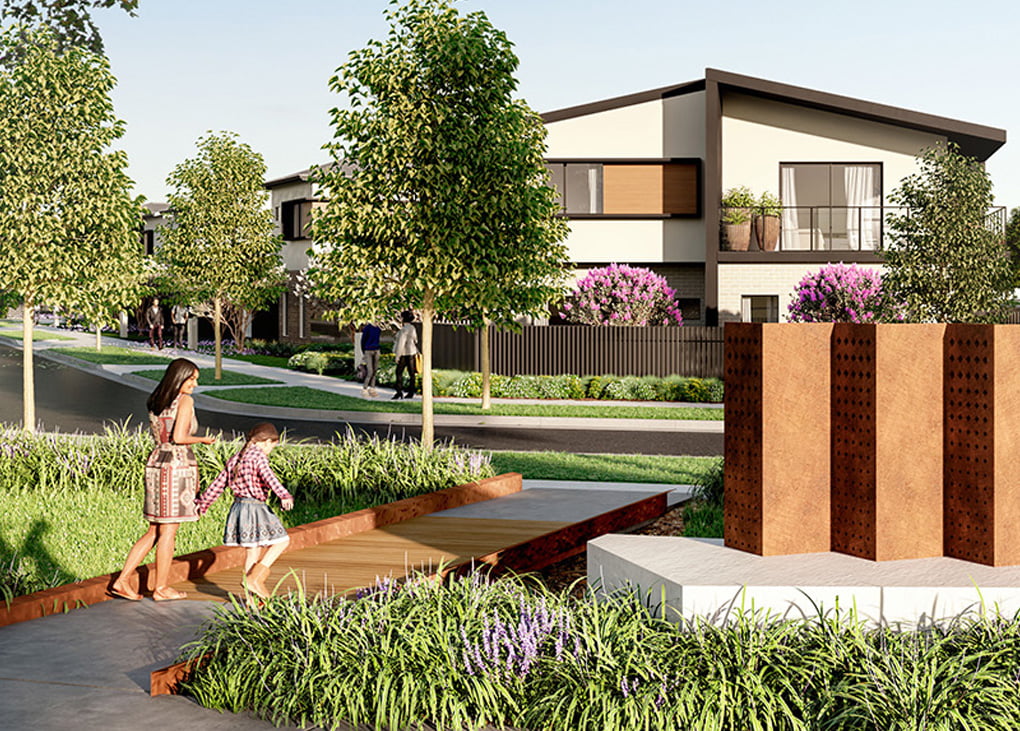The Green Building Council of Australia (GBCA) is calling on the volume home building industry to adopt the Green Star Homes Standard certification system now, ahead of a planned consumer release in 2022.
“The Green Star Homes Standard is a game-changer that will bring more liveable, marketable, climate-positive new homes within reach of everyday Australians,” says GBCA CEO Davina Rooney.
“We know the energy rating of our fridge, but not of our biggest asset – our home. This certification is designed to change that.”
The GBCA Green Star certification is the world’s first mass-market residential climate-positive certification. To be certified under the Standard, homes will have to meet criteria that make them:
- Healthy: ventilated, insulated, with minimal toxins in carpets or paint.
- Resilient: water-efficient and climate-change ready.
- Climate-positive: fully electric, draught-sealed, energy-efficient, and powered by renewables.
“The residential sector accounts for 57 per cent of Australia’s building emissions,” says Rooney. “We spend 90 per cent of our time indoors, with two thirds of this being at home.
“COVID lockdowns have forced many Australians to confront the reality that in many cases their home is uncomfortable, and costly to run.
“Green Star certified homes will reduce a household’s energy costs by over 75 per cent, through things like solar panels, better insulation, smarter air conditioning, LED lights and electric appliances.”
Rooney pointed to the recent “code red” IPCC report as underlining the need for highly efficient buildings powered by renewables to drive critical emissions reductions. Key to this is ensuring that there is enough supply of such homes. Early signs are positive, with 11 industry stakeholders already agreeing to adopt the standard.
Stockland has just delivered its first Green Star Home at its Waterlea development in Melbourne. Andrew Whitson, Group Executive and CEO Communities at Stockland, says it is an exciting initiative.
“There’s never been a more important time to be launching this,” says Whitson. “We’ve seen customer preferences change and accelerate. People are going to work more from home now, so is the home set up to do that? Is it a low- energy environment? Is it resilient and healthy? These things will go from a ‘nice to have’ to a ‘must have’.”
Metricon is another building company that has backed the standard.
“Metricon is committed to making sustainable design accessible to more Australians,” says National Product Development Manager at Metricon Homes, David McKibbin.
“The Green Star Homes standard will allow us to continue to evolve our offer for the consumer – making the benefits of a sustainably designed new home within reach for many more Australians.”
The Green Star certification has also been welcomed by insurers.
“The Green Star Homes Standard sets a new benchmark for homes that are resilient to natural disasters,” says Andrew Hall, CEO and Executive Director of the Insurance Council of Australia. “Homes built to this new standard will help pave the way to ensuring a more insurable Australia.”
The standard allows for flexible climactic variations, so the rating can be applied by builders throughout Australia.
The GBCA is working with government to bring the Green Star Homes Standard into the regulatory framework.
The National Construction Code currently requires 6 stars NatHERS rating, which describes the level of insulation in the home. The Code hasn’t been updated in a decade, and changes are due to be implemented in 2022, bringing the minimum level up to 7 stars. The Green Star certification will be equivalent to 7 or 7.5 stars, depending on the climate.
For more information on the Green Star Homes Standard, click here.
Image courtesy of Stockland.
 Mark Vender
Mark Vender


Leave a Reply